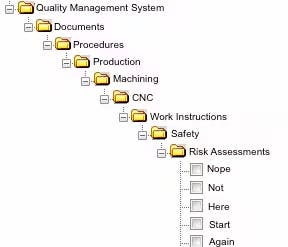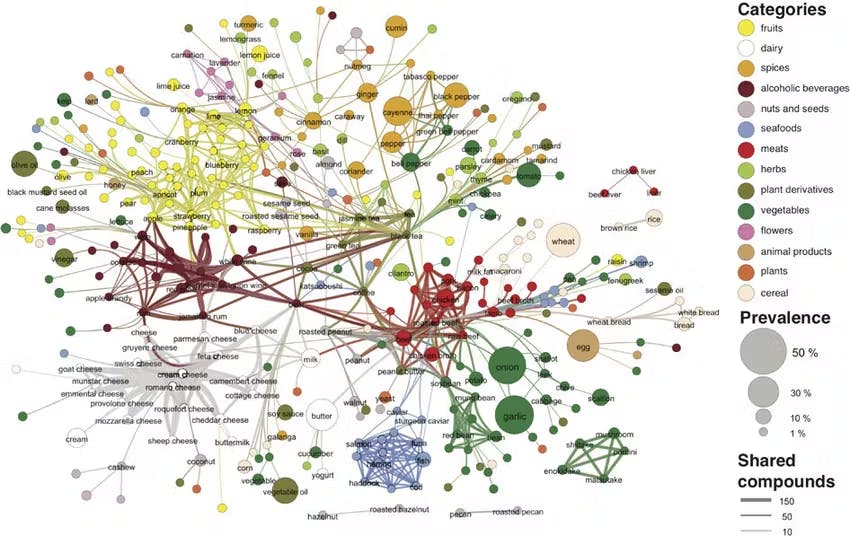
A new era of enterprise search for facilities
Humans are visual, hierarchical creatures. From family trees to business org charts, tree and table structures make it easy for us to see where things fit. Consequently, your company’s data is probably organized like this:

Source: QualitySystems
That’s manageable until you start accumulating vast amounts of information...which is where every business, from startup to enterprise, finds itself today. It’s even more problematic for facility operators because you’re dealing with a wider range of data types, such as real-time sensor streams, photographic documentation of equipment, and maintenance reports.
Tree hierarchies and tabular, relational data storage force data into silos, even if a particular document could fit into multiple categories. It’s also slow for both human and machine to navigate all the way down one branch only to find the required information isn’t there, then navigate all the way back up and over to another branch, rinse, and repeat.
No wonder most enterprise search software is slow, inaccurate, and generally frustrating.
But what if your data was stored like this?

A culinary knowledge graph linking all ingredients that work well together.
Aneurysm-inducing for a human to navigate, but absolute gold for a machine.
This is known as a knowledge graph. To avoid getting overly technical, it’s basically a network of concepts connected by relationships. This allows the machine to not only find information exponentially faster than a relational database (not to mention folder systems), but also capture far more complex relationships. That means the search results might turn up critical information that would be lost when searching a traditional database. Constructing these databases requires algorithms designed by machine learning experts with maintenance and operations domain knowledge.
Pair a graph database with AI, and you have a very powerful search engine that can understand complex queries, intelligently rank results, and make recommendations—exactly like Google Search, but specific to your business and its data. It also supports complex cross-data analytics because it can connect data across formats, from streaming sensor data to unstructured documents. This enables you to make crucial decisions with complete information, while minimizing rework and redundancy.
Does this mean you need to throw away your IT systems and databases and completely change where your information is stored? Nope. Cenozai’s Engineering Knowledge Platform uses AI that’s trained specifically for facility management to analyze your data and generate a graph database that sits in its own layer, allowing your team to gather information as their user access permissions allow.
Enterprise search has evolved significantly through graph and AI technologies, empowering facility operators to remove silos and connect data types, ultimately achieving a single version of truth. To succeed in Industry 4.0, improving the information search experience for your organization should be a critical component of your digital transformation plan. To learn how to prepare your data before migrating it to a new system (because you don’t want to clutter it with duplicates or harmful data), stay tuned for Part II of this series.
Recommended Posts

8/15/2024
A new era of enterprise search for facilities
(Part II): Data preparation
Before implementing new search technology, data cleanup and preparation is critical. Here's what you need to do.

12/16/2022
Industry 4.0: The Unstructured Data Perspective
How to build a contextual platform that will be the launching pad for every one of your Industry 4.0 initiatives.

8/9/2022
Data hoarding is a major risk for
facility operators
Data hoarding is widespread, and has a major impact on business performance. What’s the problem, why does it happen, and how can you fix it?